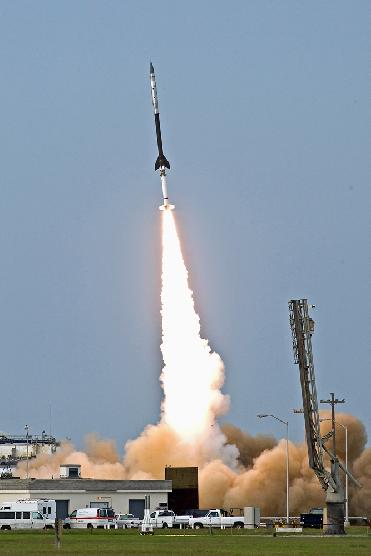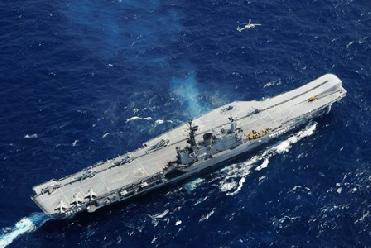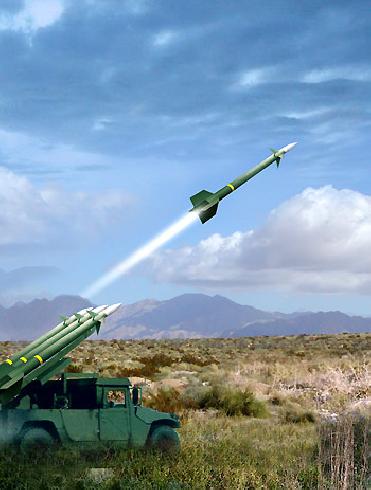
The Black Brant 9 rocket carrying the Inflatable Re-entry Vehicle Experiment launches from NASA's Wallops Flight Facility. -- Image Credit: NASA
VIRGINIA (BNS): To protect spacecrafts entering into Earth�s atmosphere at hypersonic speeds, NASA has successfully conducted the Inflatable Re-entry Vehicle Experiment (IRVE).
The test was conducted at NASA�s Wallops Flight Facility on Wallops Island here on Monday. The IRVE was vacuum-packed into a 15-inch diameter payload �shroud� and launched on a small sounding rocket.
The 10-foot diameter heat shield, made of several layers of silicone-coated industrial fabric, inflated with nitrogen to a mushroom shape in space several minutes after liftoff.
The Black Brant 9 rocket took approximately four minutes to lift the vehicle to an altitude of 210 kilometers. Less than a minute later it was released from its cover and started inflating on schedule at nearly 200 kilometers up. The inflation of the shield took less than 90 seconds, the US space agency said.
�Our inflation system, which is essentially a glorified scuba tank, worked flawlessly and so did the flexible aeroshell,� said Neil Cheatwood, IRVE principal investigator and chief scientist for the Hypersonics Project at NASA's Langley Research Center in Hampton. �We're really excited today because this is the first time anyone has successfully flown an inflatable reentry vehicle.�
The cameras and sensors on board the rocket showed the heat shield expanded to its full size and went into a high-speed free fall. The key focus of the research came about six and a half minutes into the flight, at an altitude of about 80-kms, when the aeroshell re-entered Earth's atmosphere and experienced its peak heating and pressure measurements for a period of about 30 seconds.
An on board telemetry system captured data from instruments during the test and broadcast them to engineers on the ground. Later, the technology demonstrator splashed down and sank in the Atlantic Ocean.
�This was a small-scale demonstrator,� said Mary Beth Wusk, IRVE project manager, based at Langley. �Now that we've proven the concept, we'd like to build more advanced aeroshells capable of handling higher heat rates.�
The latest experiment will help the space agency in its future planetary missions and development of future spacecraft.
 Previous Article
Previous Article Next Article
Next Article













The Indian Air Force, in its flight trials evaluation report submitted before the Defence Ministry l..
view articleAn insight into the Medium Multi-Role Combat Aircraft competition...
view articleSky enthusiasts can now spot the International Space Station (ISS) commanded by Indian-American astr..
view article